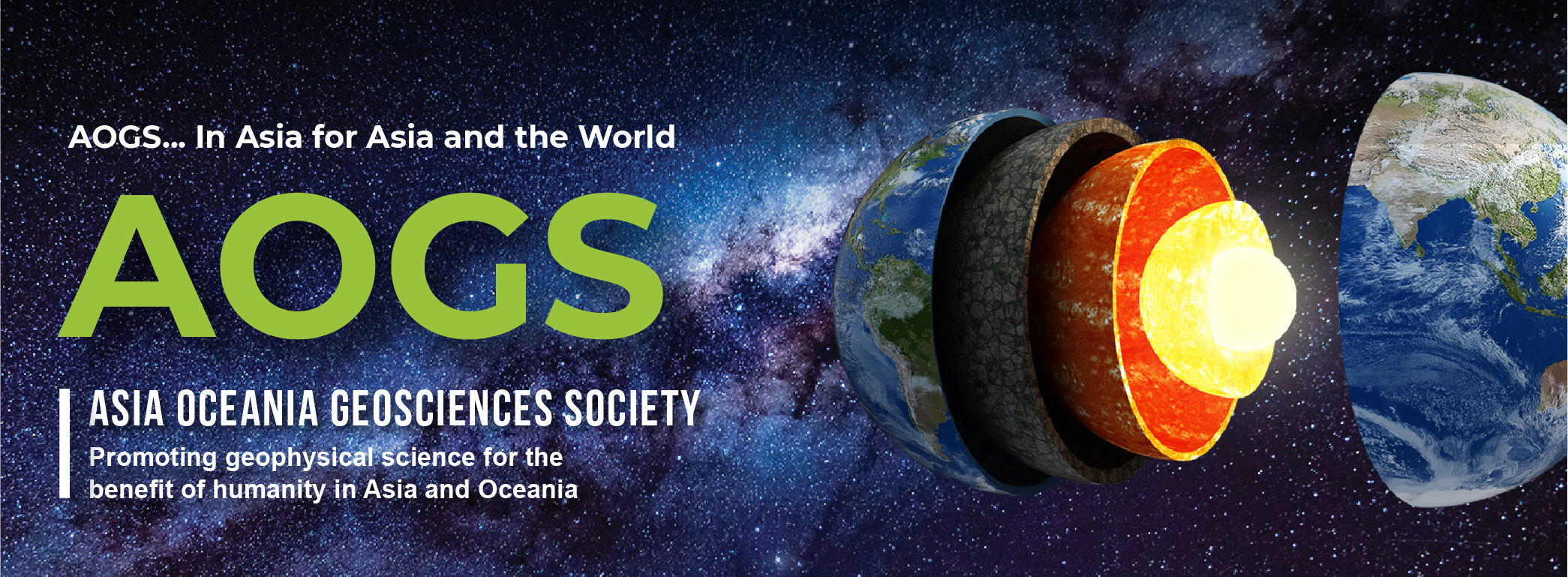
AOGS Axford Medal Award Recipient

2017 - 2018
Professor Paul Tapponnier
Earth Observatory of Singapore
The Asia and Oceania Geosciences Society (AOGS) is honored to present the 2018 Axford Medal to Professor Paul Tapponnier, Nanyang Technological University, for his ground breaking contributions to “Continental collision tectonics and Himalayan earthquake faulting”, and for providing unprecedented leadership in developing the field of active tectonics.
Professor Tapponnier is one of the foremost scientists of his generation in Continental Neo-Tectonics. He was the first to recognise the full potential of satellite imagery to study faulting and tectonic processes on a large-scale. His mapping, using the very first Landsat images, of large active strike-slip faults in and around Tibet, implied that they accommodated significant shortening between India and Asia. This revolutionised the understanding of collision tectonics. It contributed to provide a mechanical framework for deformation across most of eastern Asian. That fundamental discovery was later confirmed by fieldwork and supported by innovative analogue modelling.
Paul Tapponnier graduated from the Ecole des Mines de Paris, and started his research career at the University of Montpellier and at MIT, wherefrom he published his first influential papers in the mid-seventies. That early work suggested that India had pushed eastern and northern China eastwards, along several left-lateral faults. Such east-directed extrusion had also led to extension along the Shansi and Baikal rift. That research, in collaboration with P. Molnar, had worldwide impact.
In 1979, P. Tapponnier joined the Institut de Physique du Globe de Paris where he created the Laboratory of “Tectonics, mechanics of the Lithosphere”, a school within which he trained nearly 30 PhD students, many of which now brilliant academics in France and abroad. The group contributed to fundamental discoveries in a range of Tertiary tectonic problems, by combining in depth field studies with laboratory experiments. Plasticine models, whose results are now shown in many high-school/graduate text-books, suggested a broader extent of the Indian collision effects, including the westwards expulsion of Sunda and openings of the South China and Andaman sees. This triggered field studies that showed that the Ailao Shan-Red River shear zone had been an Oligo-Miocene plate-boundary between Sunda and South China, with one of the largest strike-slip displacements known (700 km). Concurrently, a new seafloor spreading reconstruction of magnetic anomalies across the South China Sea, confirmed the intimate link between that spreading and slip along the Red River fault, in plate-tectonics’ fashion. Such combined onshore/offshore research yielded a comprehensive model of Southeast Asia’s Tertiary Tectonics.
P. Tapponnier and colleagues’ 20 years-long collaboration with Chinese geologists and geophysicists across Tibet led to first-order quantification of present-day, high altitude normal faulting perpendicular to the Himalayas, and to the hypothesis of a stepwise northward growth of the plateau since the early days of the collision. They were also among the first to extensively use cosmogenic isotopes to date, and correlate with climate change back to 180 ka, faulted geomorphic markers, which helped develop the field of Morpho-Tectonics, and extend deformation rates measurements to time-scales older than the Holocene.
Outside East Asia, P. Tapponnier and his students/colleagues contributed to clarify rift propagation between Arabia and Africa, earthquake return times and Tsunami sourcing along the Yammouneh fault and the offshore Mt. Lebanon Thrust, and active normal faulting within the Caribbean Arc, consistent with extensional block rotations along a convergent plate boundary.
In 2009, P.Tapponnier moved to Singapore’s Nanyang Technological University, where he actively contributed to develop the Tectonic Group within the newly created Earth Observatory of Singapore, now one of the best academic centres worldwide in earthquake research. In the past decade there, he and his PostDocs found the hitherto unrecognized surface ruptures of the great, 1934 and 1950 Himalayan earthquakes, at the front of the Siwaliks in Nepal and of the Abor-Mishmi hills in Assam, respectively. Building on the approach he had kept developing to study the active earth, he also led the way in using ever higher resolution imagery, up to present-day terrestrial and airborne LiDAR surveys, in order to quantify superficial fault offsets of only a few centimetres.
Professor Tapponnier is a fascinating geologist in the field and in the lab, with an encyclopaedic knowledge, fed by months-long expeditions to different parts of the world. I was fortunate to work with him on seismic data acquired after the 2004 Sumatra-Andaman earthquake, for which he provided key insights, based on his experience in studying Megathrust on land. Well before the 2011 Tohoku earthquake, he contributed to recognize the importance of “Popup” thrusting at the front of accretionary prisms in generating large tsunamis.
His contributions have been acknowledged by various awards and honours, including: Alfred Wegener Medal, European Union of Geosciences, 1985; Fellow of American Geophysical Union, 1994; Friendship Medal, China, 1998; Lyell Medal, Geological Society of London, 2001; Foreign Member of the US Academy of Sciences, 2005; Member of the French Academy of Sciences, 2005.
Given his pioneering, continuing research across Asia, the 2018 AOGS Axford Medal is a particularly well deserved distinction.
Professor Satish Singh (Institut de Physique du Globe de Paris)
